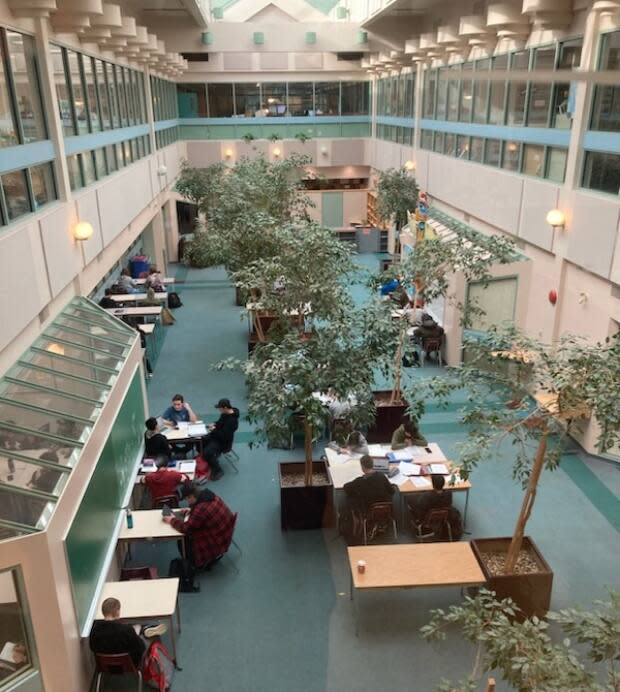Self-directed learning at new Bedford school aims to teach life skills alongside curriculum

Students at a new high school being built in Bedford, N.S., will soon have an opportunity to experience a new approach to education in the province.
The school, which is slated to open this September and has not yet been named, will offer students self-directed learning.
The model will see students in grades 10 to 12 spend about two-thirds of their time with teachers in a regular classroom, and the other one-third on flex time.
During flex time, the students can leave the classroom. They will be able to conduct self-guided learning in a school environment of their choice — furniture in the hallways or collaborative spaces, the library or open classrooms.
Students will begin their day with a teacher adviser who will be their main point of contact throughout their years at the school. The teacher adviser will help them plan their flex time each day and meet with them again in the afternoon to make sure they're on track.

School principal Sean MacDonald says the teacher adviser will be key to supporting students.
"High schools are big places and we just want to ensure that every student knows that they've got somebody that they can go to because that teacher adviser will act as, like, a mentor and advocate for them," he says.
Learning life skills
Students will be given learning guides that provide reading materials, links to videos, assignments and self-evaluations. If they run into trouble with the material, subject teachers will be available during flex time to help them.
MacDonald says self-directed learning will allow students to use their flex time to focus on subjects they're struggling with, but it will also teach life skills such as organization, time management, problem solving and collaboration.
"It creates that autonomy for students, and when students have greater autonomy, they rise to that," he says. "I think that's the big thing, is that when you provide students with options and ways that they work best, then you'll see them be more successful."
Closer student-teacher relationships
MacDonald has visited schools in B.C. and Ontario where self-directed learning is used, and says one of the biggest differences he noticed was in the relationship between students and teachers.
"There just seemed to be this ease with each other in terms of the way that they operated," he says. "The relationship is not in any which way strained because it's not me telling you what you need. The student is coming to look for what they need."
Carla van der Pauw teaches languages at Thomas Haney Secondary School in Maple Ridge, B.C., which has used self-directed learning since it opened in 1992.
"Students are very comfortable speaking to adults, you know, advocating for themselves to other adults because we have been practising those skills in what we call our open areas."

She says students are able to pursue projects of interest during school time — like building a robot — that they wouldn't ordinarily be able to do under the "factory model of education."
But some students do face challenges with the freedom that comes along with self-directed learning.
"Some students are overwhelmed by choice," she says. "They will choose to spend their whole day in the art room because that's what they love, and never go to math because they hate it."
Perle Suddaby, a Grade 12 student at Thomas Haney, says self-directed learning has taught her time management, organizational skills and independence — things that will be useful this fall, when she hopes to go to university to study computer science.
"I know it will help me," she says, adding that she has older friends who went to Thomas Haney who are now in university. "They are seeing their fellow classmates struggle with the, like, waking up at your 9 a.m. lecture and then not having anything else for the rest of the day. But that's just a day at Thomas Haney."
Program could expand
MacDonald doesn't anticipate any drawbacks to self-directed learning.
"I don't see how this scenario doesn't necessarily work for any particular student," he says. "Whatever structures or things we need to kind of add on to support that student, we would do."
The school, which will be located on Broad Street at Larry Uteck Boulevard, will have capacity for 1,200 students in grades 9 to 12 and will be the first in Nova Scotia to offer self-directed learning.
Students do not have to apply to participate; all students in grades 10 to 12 will automatically learn under the new model. Students within the catchment area of the new school who do not want to participate can choose to attend a different high school in the area.
If the model is successful at the new school, it could be expanded to other schools, MacDonald says.
MORE TOP STORIES


